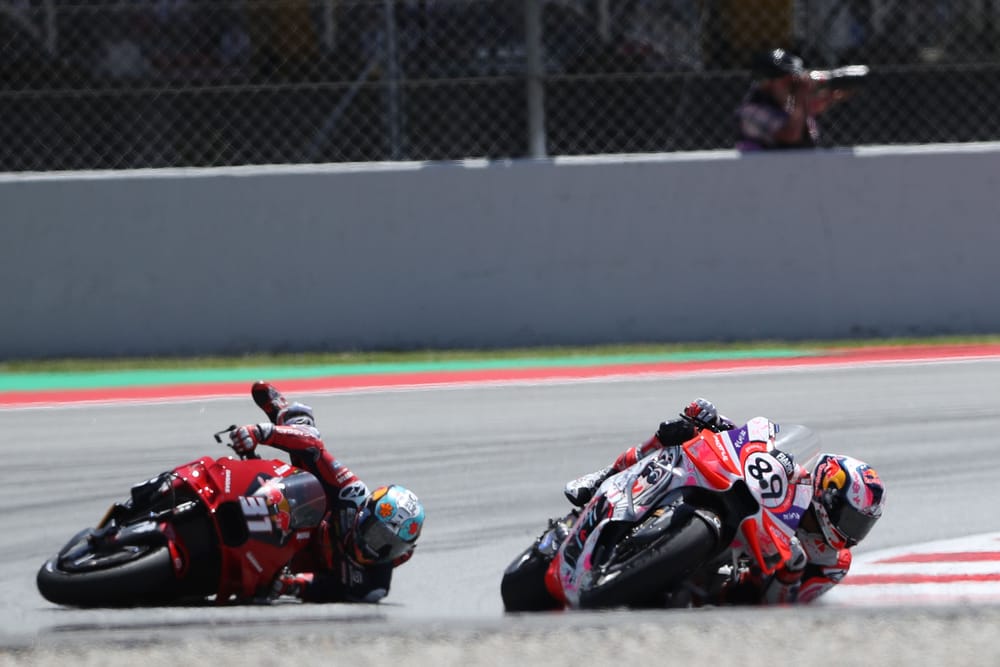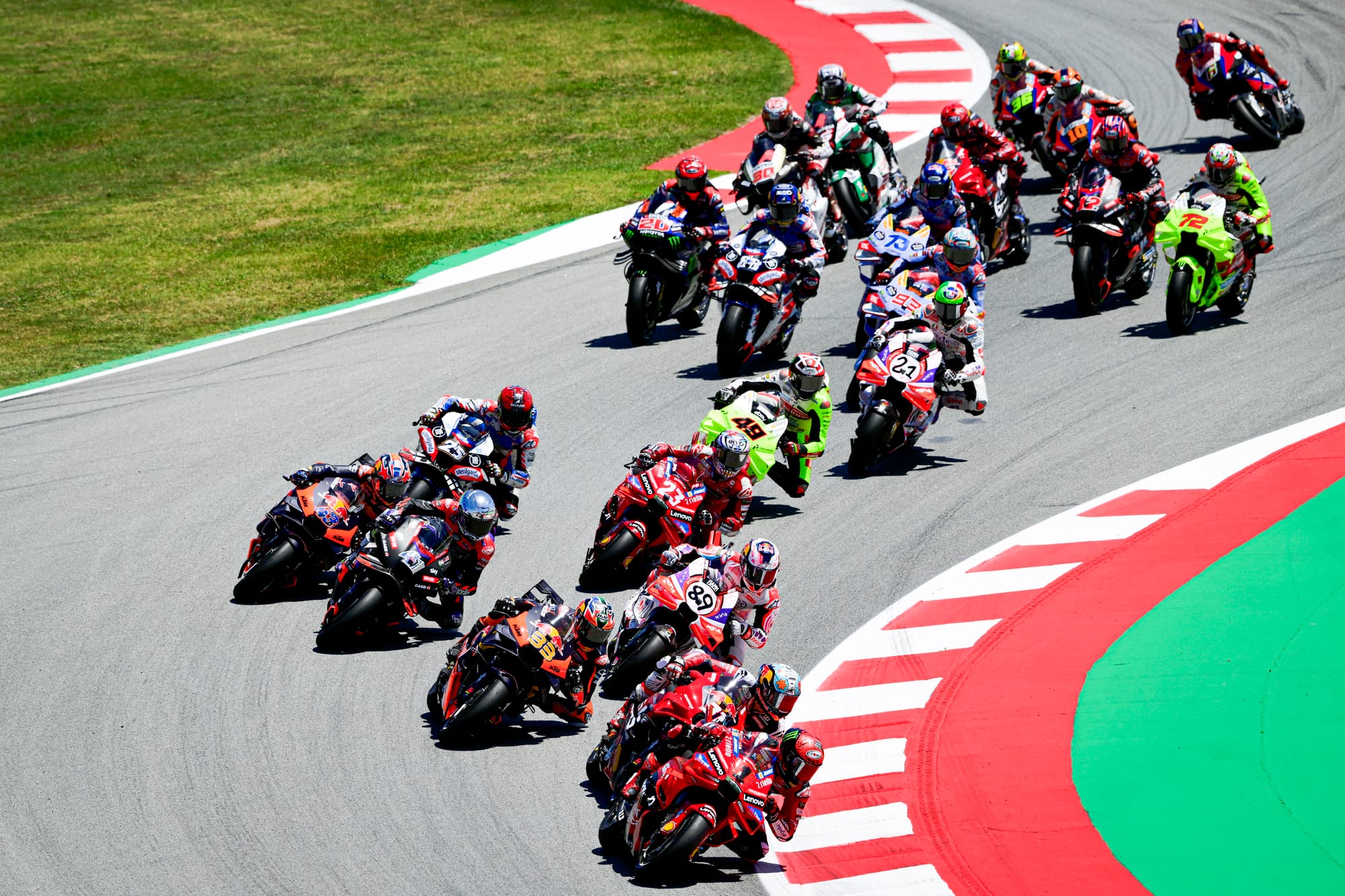Was Pedro Acosta reigning champion Pecco Bagnaia's secret weapon in the Catalan Grand Prix?
The rookie star followed up a feisty-but-futile French Grand Prix outing with a feistier-but-slightly-less-futile Catalan Grand Prix ride, crashing on lap 11 while in pursuit of leader Jorge Martin.
He remounted to salvage three points for 13th, while Martin, having successfully withstood Acosta's onslaught, then proved powerless to resist Bagnaia in the closing laps of the race at the tyre-chewing Barcelona circuit.
So how much did Acosta win the race for Bagnaia - and should he have won it for himself?
The crash
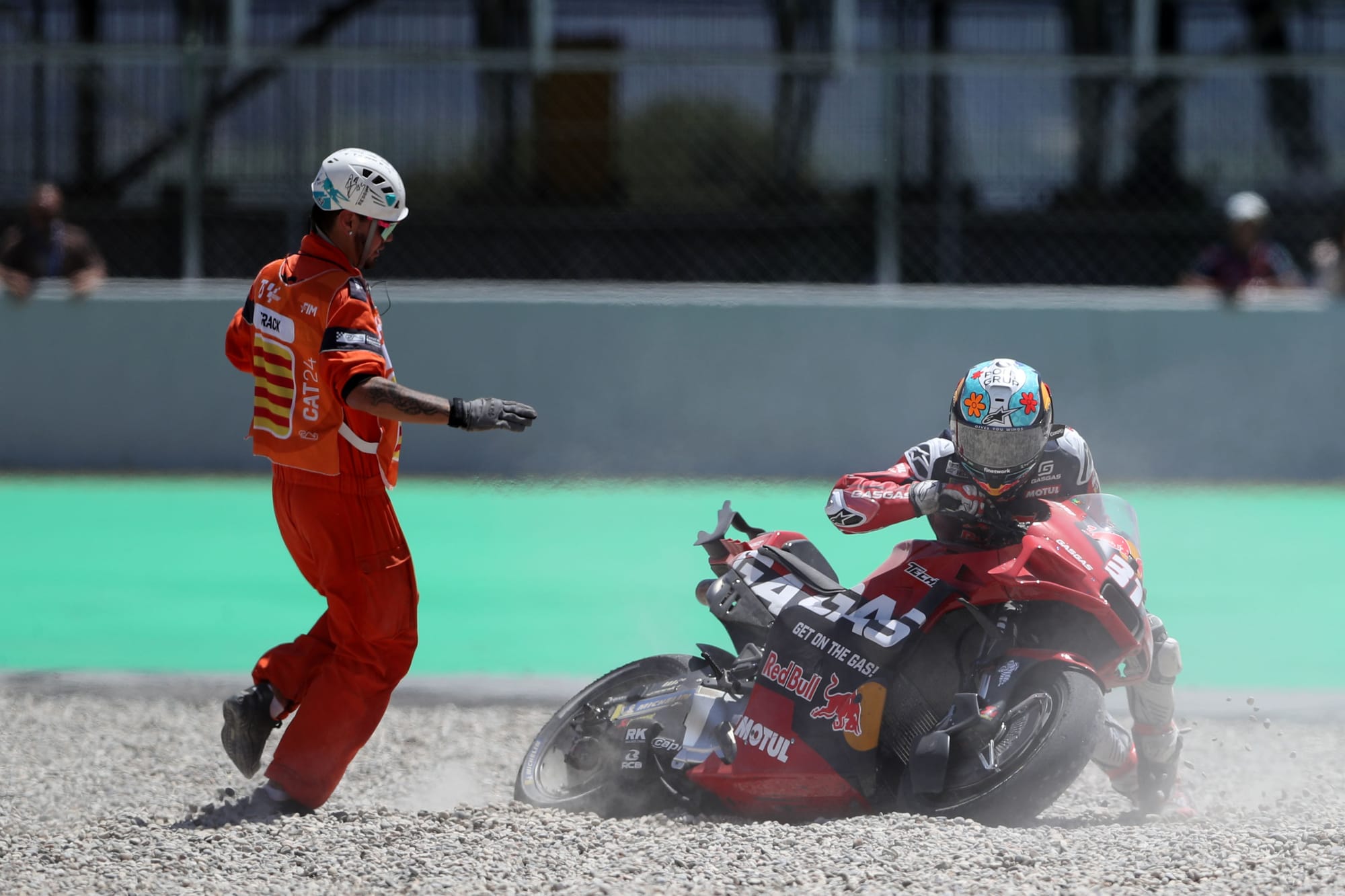
Acosta was one of four riders in the field to pick the soft rear tyre - in theory faster but less durable - over the favoured medium rear, and his pace conveyed a sense of urgency.
But he insisted post-race that he wasn't trying to rush himself into the lead, and Marc Marquez's charge from 14th to third on the soft was at least evidence the tyre was capable of holding up reasonably well.
"Maybe Marquez overheated a bit, maybe because he was at the back of his front group, let's say, he lost more time than yesterday to overtake the guys. But for me [the soft] was the tyre to win," Acosta posited.
"I will not say that I was going to beat Pecco and Martin, but to be honest with the pace that we had and the gap that I had - between, let's say, Pecco that was the third and Marc in the back of the group - let's say in the worst of the cases I'm P3."
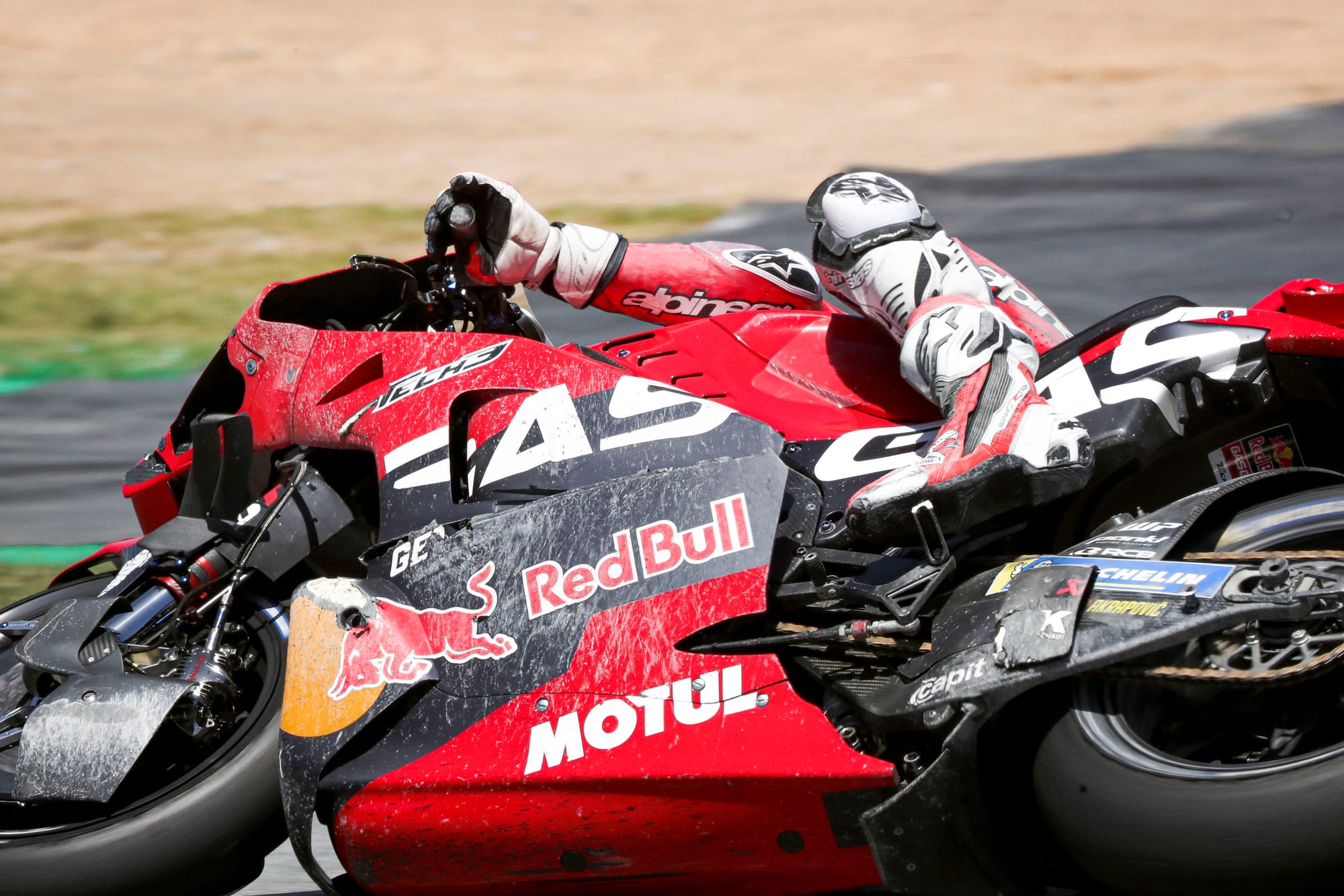
This is obviously accurate, as even simply subtracting the time Acosta lost in the crash from his race time puts him just about third, without accounting for the time loss of fighting his way through the lower reaches of the pack.
And while Acosta shied away from suggesting he could've won - indicating that this would be disrespectful to Bagnaia - he clearly didn't feel it was a lost cause.
This was part of what annoyed him so much about the crash. The other part was its uncertain origin.
"We had a problem with the front part of the bike, that is not so clear at the moment, it's difficult to say why," Acosta explained, offering no real clarification beyond the fact that it wasn't tyre-related.
"Again, the bike was a bike to be on the podium. For this I'm quite angry because I don't really like to put a podium in a bin. But the bike was competitive like hell."
In Gas Gas's post-race press release, no mention was made of an issue, and team manager Nico Goyon simply said "we know it is easy to crash here".
Bagnaia benefits
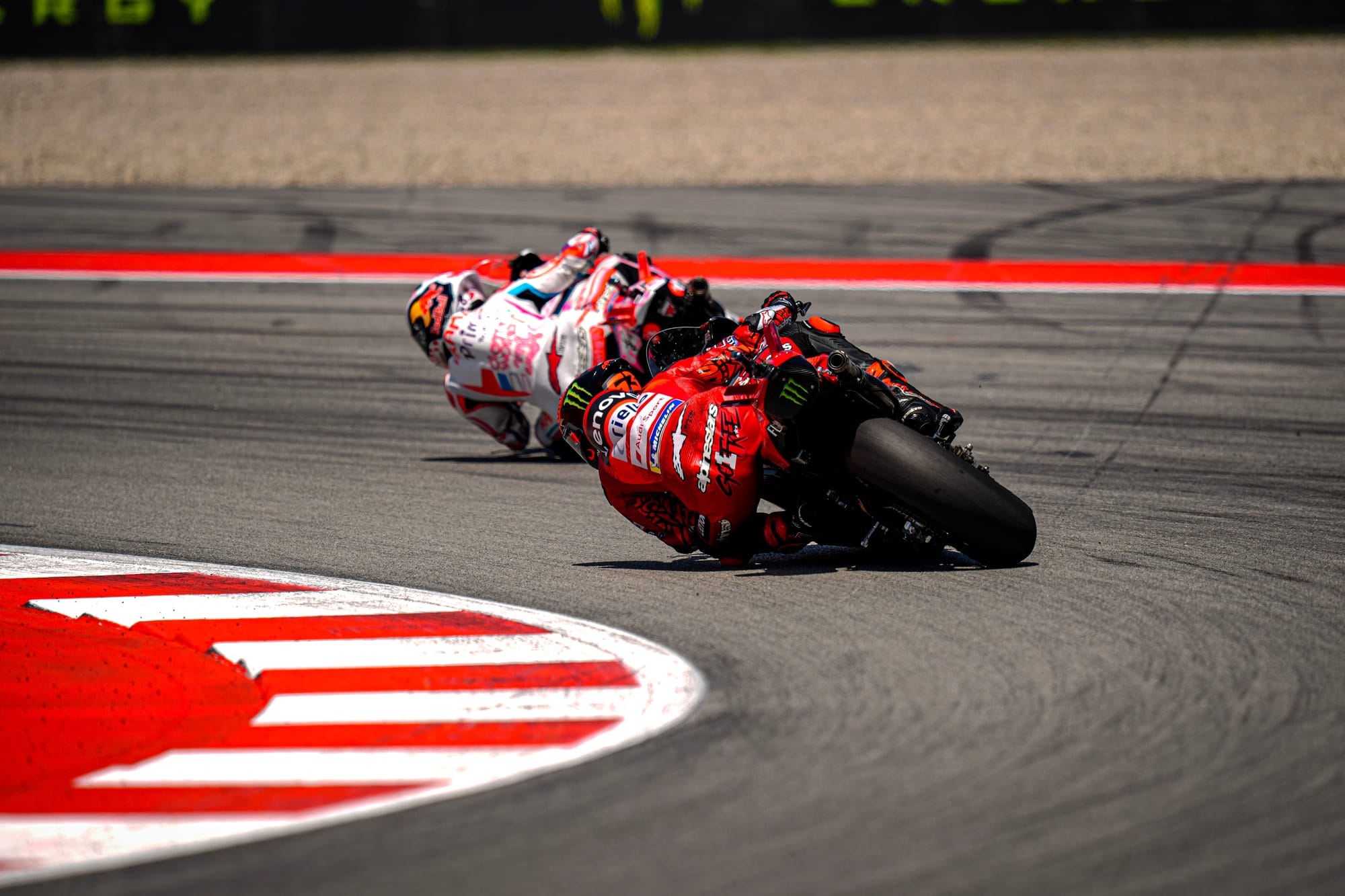
But by that point, Acosta had already done his job for Bagnaia - which is no mere surface-level reading of the race but something Martin himself admitted as a likely explanation, too.
Martin wanted to lead, so Acosta's pressure forced the championship leader to inflate the early pace after both had worked their way past Bagnaia.
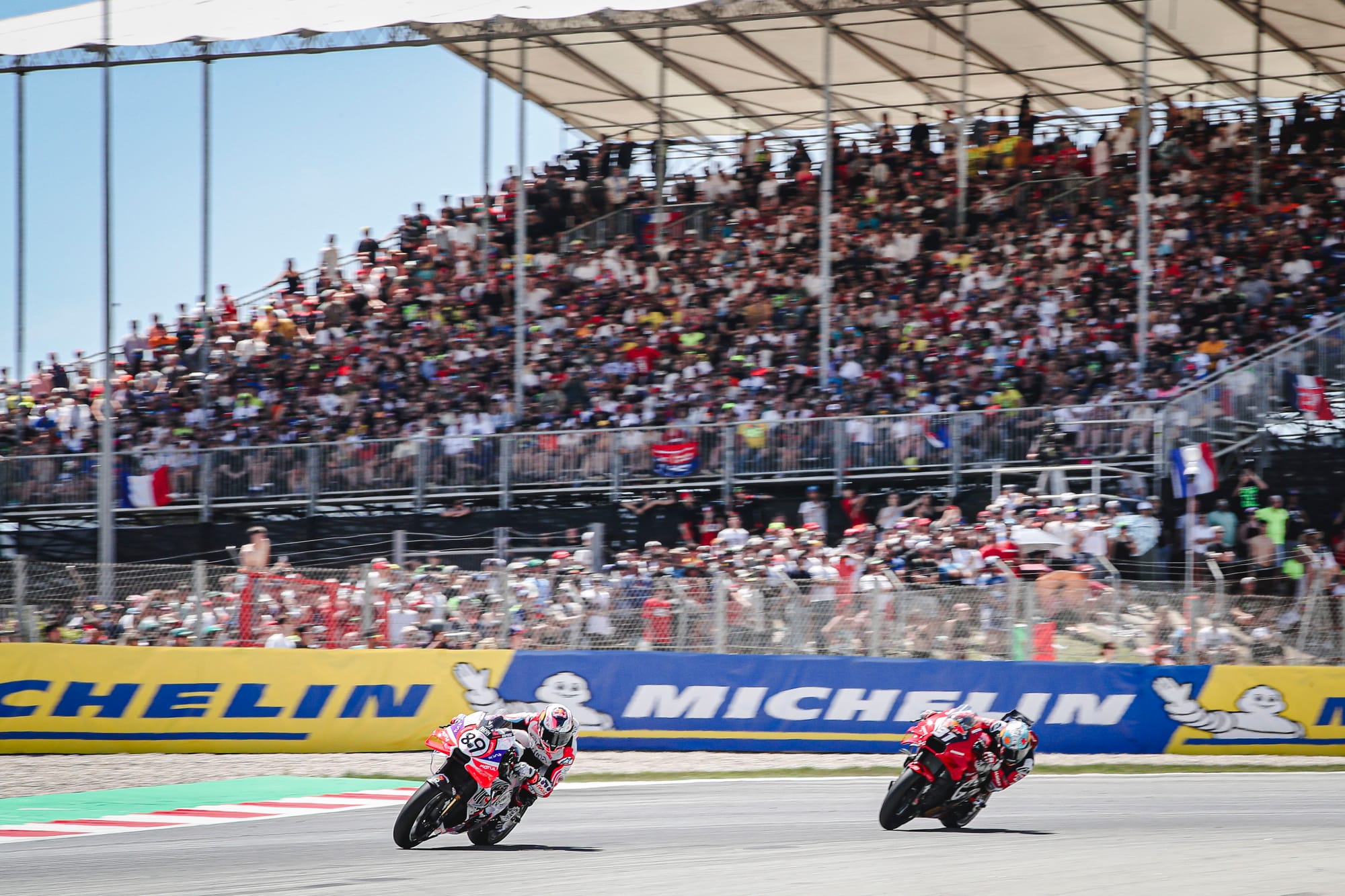
Martin's first lap in the lead was lap five, but his first lap in the 1m40s range rather than the 1m39s range was lap 11. For contrast, Bagnaia was pacing himself in the 1m40s range from lap five to lap eight, slower than Martin on all but one of their nine corresponding flying laps until Acosta's crash.
But while Martin's pace then showed something of a linear drop-off, Bagnaia kept his in around the same range until he reeled in and overtook his rival.
"Maybe with Pedro behind I pushed a bit too much," Martin admitted to MotoGP's After The Flag show.
"Because I wanted to stay in the lead, and he was really close.
"And when Pecco caught me I had nothing else to fight with. I had one last shot with another [engine] map, but that was the end of my race. I destroyed the rear tyre, and from that point I had no front, no rear."
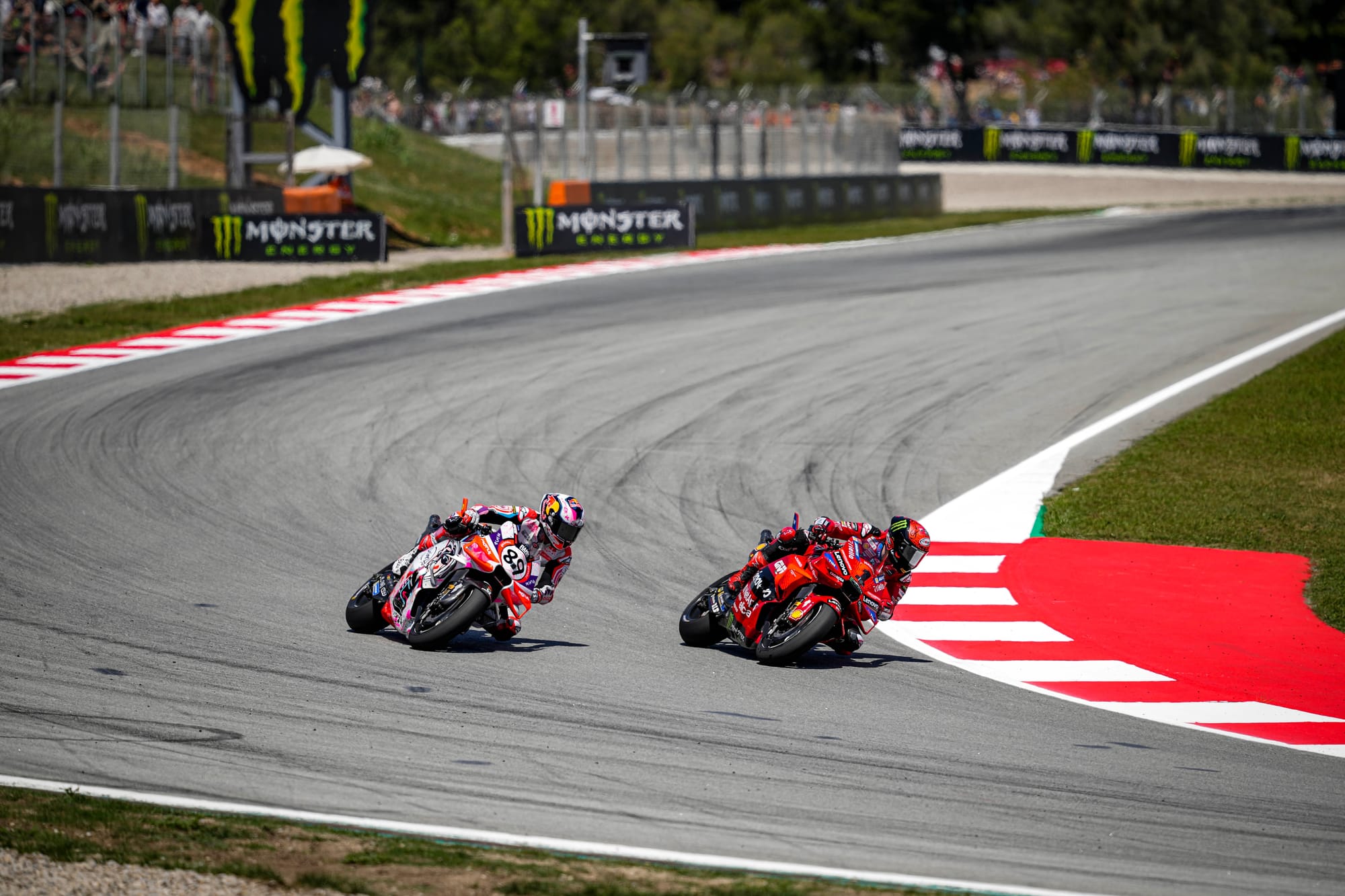
"I just decided to remain as constant as possible and not push at the start like Martin and Pedro," said Bagnaia on the same programme.
"It was very difficult. When they overtook me, I just tried to do one lap pushing a bit more, but I saw that for the tyres was a disaster.
"And after 10 laps I started to see that my strategy was working. I was a bit scared [to begin with], but it worked."
How crucial was Acosta?
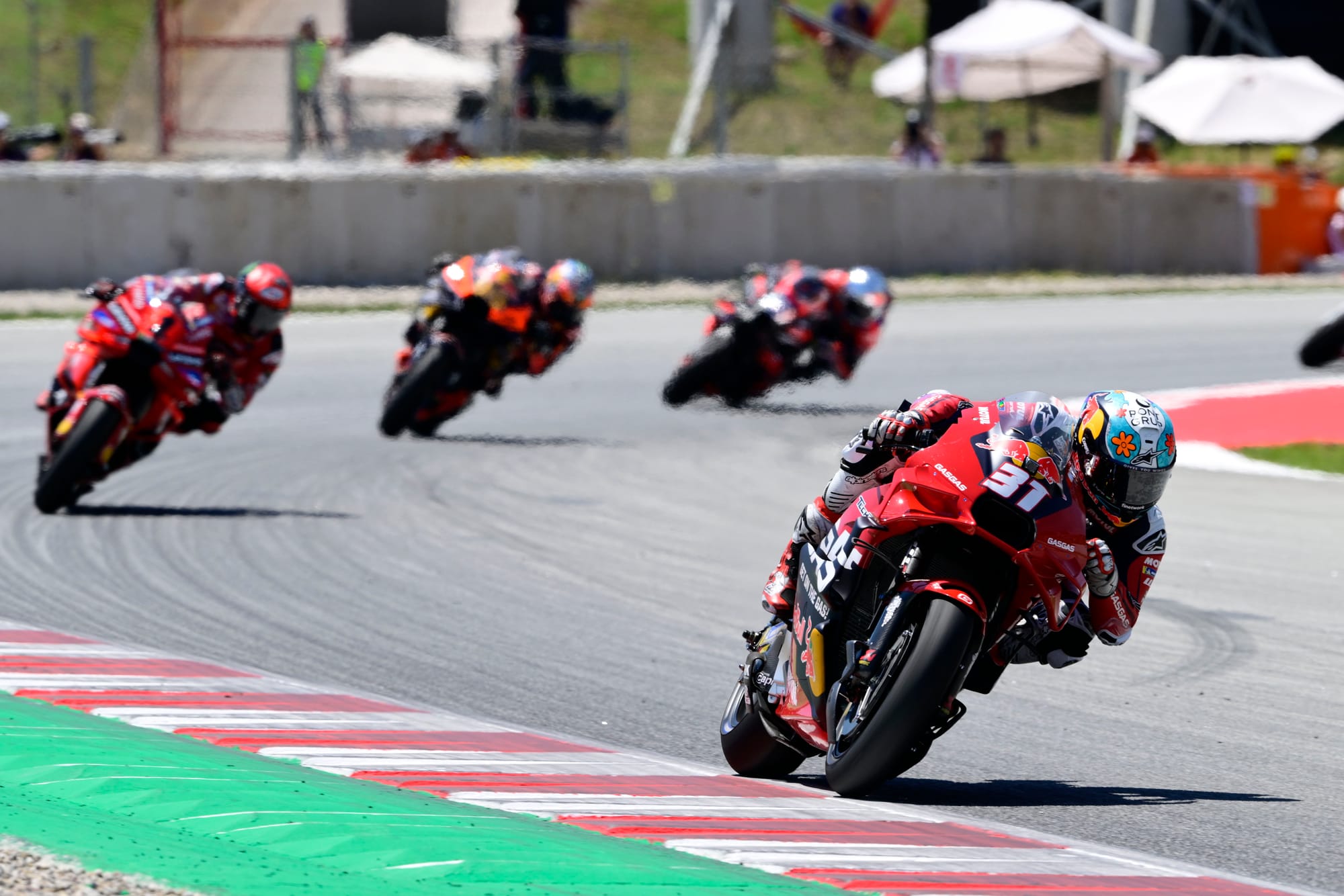
It's also fair to ask, though, whether Martin using up too much of the rubber keeping Acosta at bay was simply a different route to the likeliest outcome.
Had he allowed Acosta through - and thus run more close to Bagnaia at that point in the race - or had he just stayed behind Bagnaia in the early going, it would've saved him more tyre but lost him valuable track position. Martin's comments suggest that the expectation and intention was to lead the race, so the front tyre pressure was probably set accordingly - and running in traffic may have been untenable anyway.
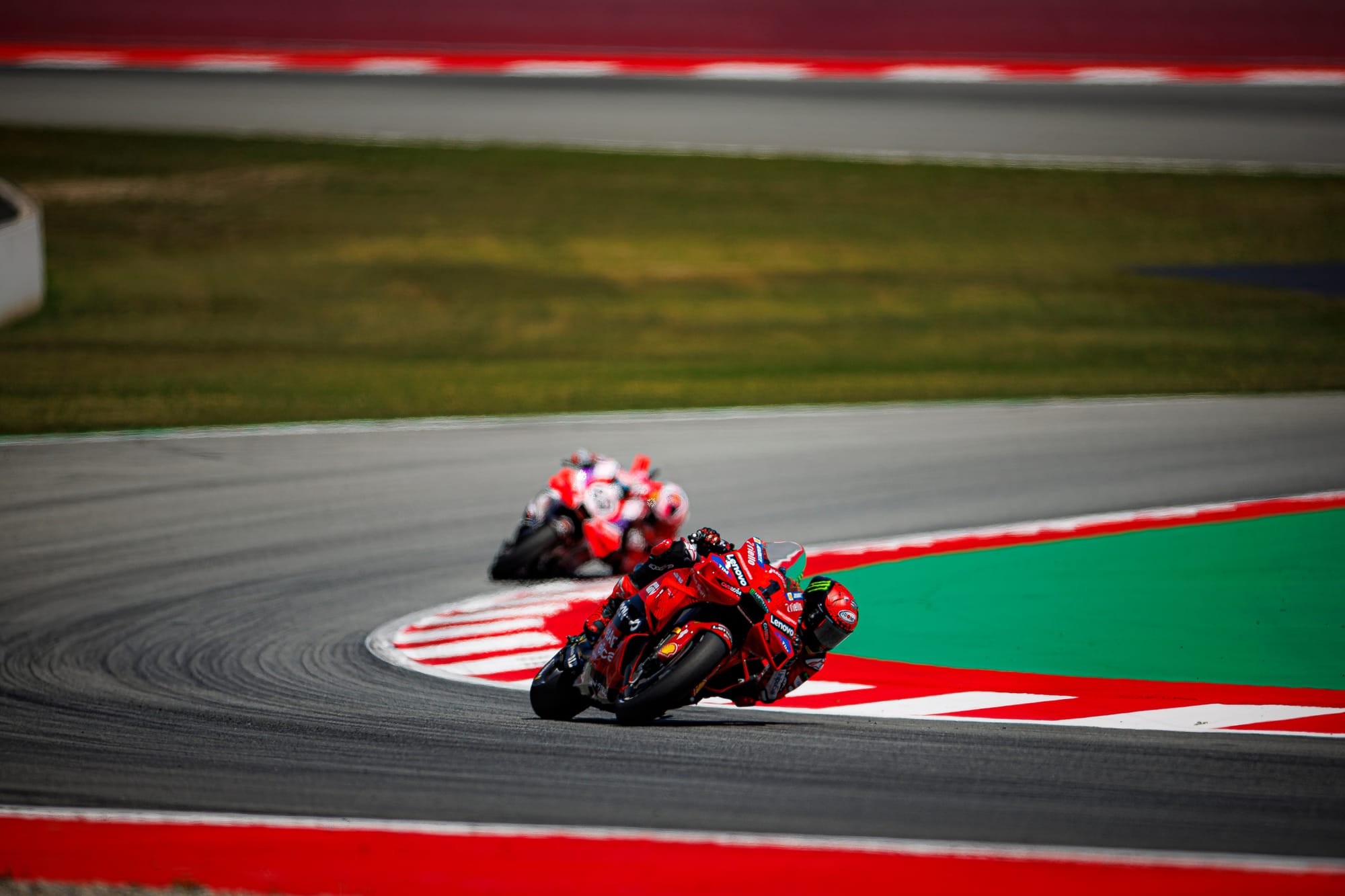
But also, a tyre-chewing race like this isn't really Martin's forte, historically. It is Bagnaia's. He looked to have a bit more race pace than Martin for much of the weekend, especially in the sprint, so he was always going to be favoured in a mano a mano Sunday duel.
Martin has his own aces up his sleeve, and in the end he still left Barcelona having scored more than Bagnaia, with his defeat in the Sunday duel a 10-point swing that should be easy enough to stomach.
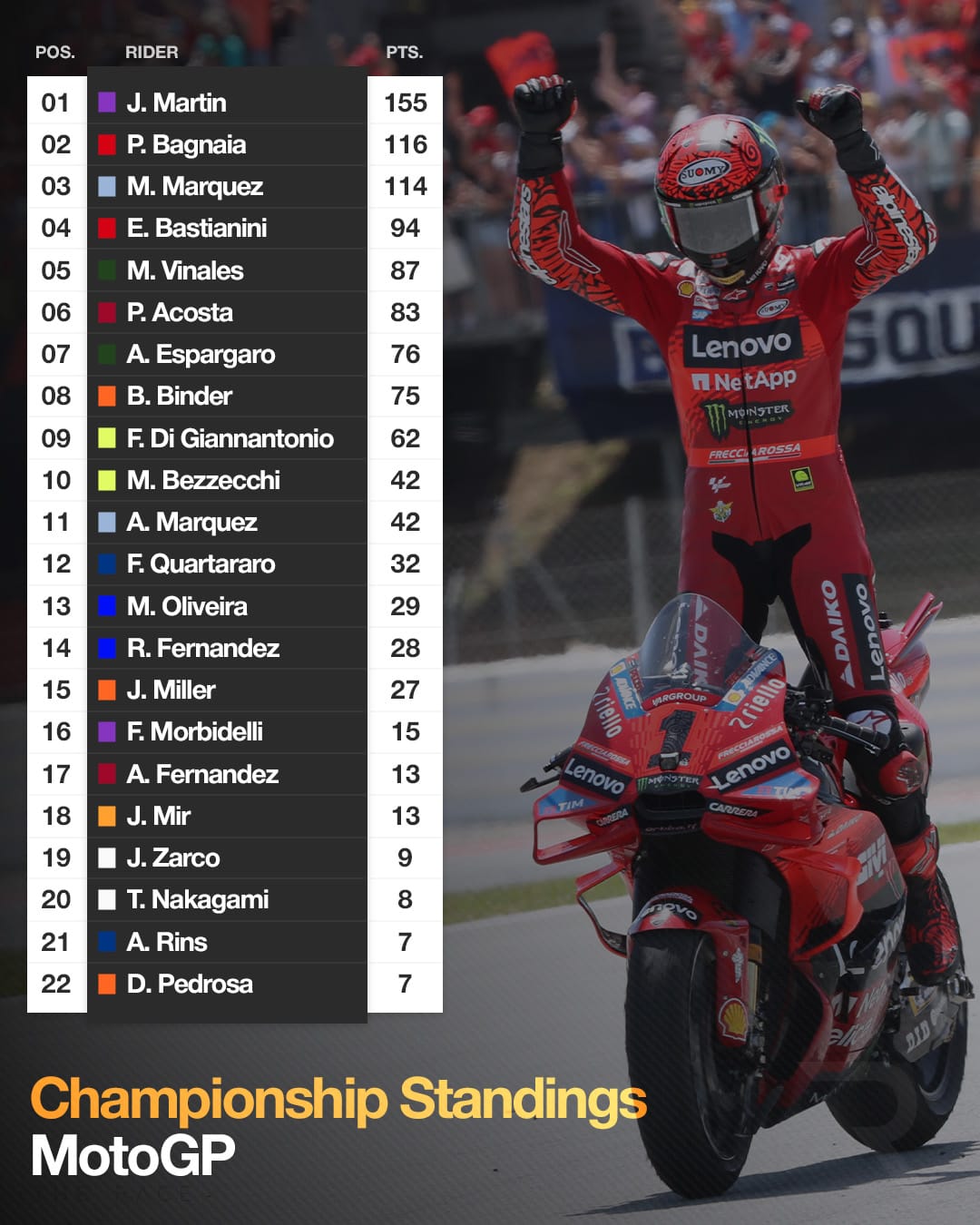
"When I saw we had eight-nine seconds [to third place], it was no sense to try to fight," said Martin. "I could do it. I could crash. So it's better second position, 20 points."
He's right. And he remains in a strong position to win this year's championship because of that.

